We are bombarded with multiple stress-inducing events on a daily basis. From incessant pressure at work to unending responsibilities at home. Not to mention, information overload, negative news, noise pollution, relationship issues, financial worries, and unrealistic expectations imposed on us by ourselves and others. I could go on, but you get my point.
Life is hard, y’all, and I’m an optimist!
Furthermore, the build-up of stress can eventually lead to anxiety and depression, or worse, burnout!
Although we can’t always avoid all of the stressors in our lives, we can develop healthy strategies to minimize their negative impact on our physical and mental health.
Deep breathing techniques are one of those strategies that we can add to our toolbox. It’s free, easy, and most times quicker than a full-on yoga flow.

What Is Deep Breathing?
Deep breathing is a technique that allows you to calm your mind and reduce the concentration of stress hormones in your blood, which can contribute to the enhancement of your health. Deep breathing helps you calm down rapidly, think more clearly, and focus on what you are doing.
Deep breathing is a technique used to help you achieve “inner” peace and a sense of calm. It allows you to breathe slowly through your abdomen, rather than the shallow rapid breathing we typically do through our chest.
Abdominal breathing helps to balance the nervous system by reducing the release of stress hormones. Thus, it encourages the body to calm down and relax, decreasing anxiety levels.
Deep breathing inspires mindfulness by helping you focus more on what you’re doing. Instead of making emotionally charged rash decisions, deep breathing can help you make better decisions by giving you the space you need to take your time to think things over. Making better, more thoughtful decisions also helps to reduce stress.
How Does Deep Breathing Reduce Stress?
Deep breathing boosts the amount of oxygen in your bloodstream. Having more oxygen means your cardiovascular system works more efficiently.
As your brain detects the increased oxygen in your system, it responds by reducing the concentration of stress hormones. As a result, you calm down, and you become less stressed. You will literally start to feel amazing.
Follow these steps to perform basic deep breathing exercises:
- First, put your right hand on your abdomen near your navel.
- Next, place your left hand on the center of your chest.
- You might find it helpful to close your eyes if you feel comfortable.
- Inhale and exhale a couple of times fully to shift breathing from chest to abdominal or diaphragmatic.
- Next, inhale deeply while focusing on the rising of the abdomen as the lungs fill with air.
- As you do this, it should cause your belly to expand about an inch.
- Then, slowly let out your breath.
- While exhaling, most of the movement should be in the area underneath your right hand. Your chest should only move slightly.
- Repeat 3 to 4 times. Focus on how you feel.
Here are a few more deep breathing techniques to explore:
- The 444 technique was made popular by the Navy Seals.
- The 478 technique was made popular by Andrew Weill.
Benefits of Deep Breathing
When you’re calm and relaxed, you breathe through your nose in slow, even breaths. When we experience stress, our ‘fight or flight response kicks in.
Our breathing becomes more rapid and shallow to increase our oxygen supply. More oxygen means more blood rushing to our extremities, allowing us to run for cover or fight for our lives. This ancient response was meant to protect us in case we needed to escape the grip of a lion or a bear. In modern times, we still experience this change in body chemistry whether it’s a lion chasing us or an angry boss. Our brain doesn’t know the difference.
This creates an imbalance of oxygen and carbon dioxide that has no way of escaping, which affects our health and well-being. We can change this by employing our deep breathing technique which shifts our autonomic nervous system from “fight or flight” (sympathetic) mode, to “rest and digest” (parasympathetic) mode.
Here are a few physiological benefits of focused, deep breathing:
- Lowered heart rate and blood pressure
- Reduced build-up of lactic acid in muscle tissue
- Stronger immune system
- A boost in physical energy
- Reduced levels of stress hormones
- Balanced oxygen and carbon dioxide blood levels
- Increased feelings of calm and relaxation

Deep Breathing Tips and Tricks
Here are some tips and tricks you can use the next time you’re using the deep breathing technique to help you reverse your stress responses and feel calmer.
- To quickly switch from chest breathing to abdominal breathing is first to take 2 full exhalations to empty the lungs.
- Pushing out the air from the bottom of our lungs creates a vacuum that will allow you to switch to abdominal breath on your next inhalation. Next, pause for a second or two before inhaling slowly.
- The recommended breathing is through the nose. It takes a while for some people to get used to nostril breathing. If that’s you, you can breathe through your mouth until you’re more comfortable.
- Avoid taking more than five deep breaths. More than five breaths can make some people feel light-headed. If this sounds familiar, take 2–3 breaths at a time to avoid feeling giddy or off-balance.
Stress comes in many different shapes and sizes. It affects each of us differently. That said, stressors don’t necessarily come in small challenges that build up over time. They can also present as one big life event that comes out of nowhere and turns your world upside down.
Whichever way stress burrows its ugly head into your life, the strategies for managing its effects are many. Deep breathing is one technique that’s proven to be successful at managing stress and keeping its long-term effects at bay. As you can see, this calming technique has many science-backed benefits including lowering stress levels, improved blood flow, and increasing sleep quality.
As we continue to move through our beautiful, yet sometimes stressful, world, let’s remember to fully enjoy our lives one breath at a time.
Be well + prosper,
Elaine xx
